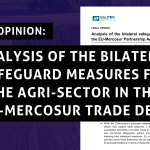A leak of the European Commission’s plans to overhaul the EU’s Emissions Trading System, confirms the intention to expand it to other sectors and increase the ambition of the EU carbon market, but continues the special treatment of industry.
While all other sectors, including even the newcomers to emissions trading – road transport and buildings – will move towards full auctioning in 2026, hence paying for any generated pollution, industry will continue to receive pollution permits for free. The leak does not contain further information about aviation.
Industrial emissions under the EU Emissions Trading System have been stagnating in recent years and nearly all are covered by free pollution allowances.
“The polluter pays principle enshrined in the EU’s fundamental treaties should apply fully in all sectors under the EU ETS. This means shifting towards full auctioning immediately. Hence, industry cannot be left off the hook. In addition to applying a price on pollution, the EU should set stringent product and emissions requirements under all relevant tools and policies available.
If we want to cut emissions, we have to get rid of the free allowances and put a higher price on pollution,” said EU Climate and Energy Policy Coordinator at Climate Action Network (CAN) Europe, Klaus Röhrig.
The leaked document looks as well at better using ETS revenue to support the necessary transformation of the economy. The Commission is proposing to earmark all revenue generated through the auctioning of allowances under the ETS for climate-related purposes and to ensure that the Modernisation Fund created to support low-income Member States does not grant any fossil fuel investments.
Note to editors
The proposals are part of a major revision of key EU climate and energy legislation to be presented on 14 July that should help the EU to achieve its climate objectives. Key parameters for the ETS’s overall ambition were left blank in the leak, including the new 2030 target and the trajectory of the emissions cap. In order to be made fit for the Paris Agreement, the EU ETS needs to achieve at least 70% emission reductions by 2030, compared to 2005 levels and reduce the emissions cap by 450 million allowances right from the start to better reflect real emission levels.
ETS currently covers around 40% of the EU emissions from the power, the industry and aviation sectors.
CONTACT: Cristina Dascalu, communication coordinator, cristina@caneurope.org.



